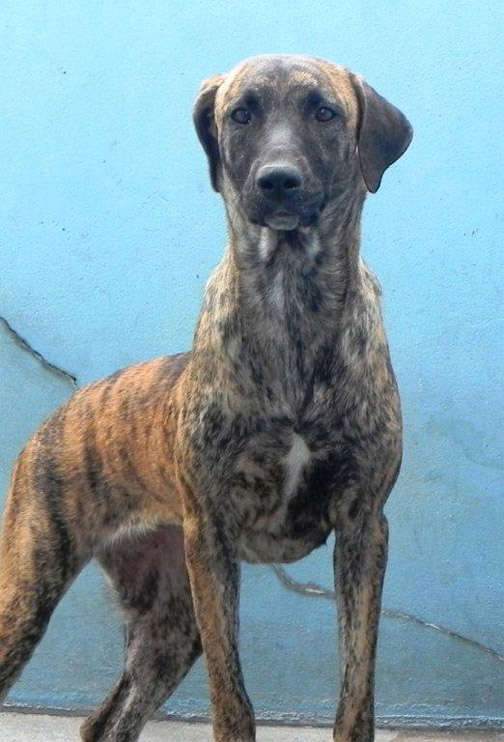Events occurring over the past week dictate that I continue to dwell on this topic which appeared in last week’s column (not for the first time). Firstly, within the space of one week, two cases of pyometra presented themselves (fortunately, both dogs survived); and secondly, when I did a superficial bit of research on the patients suffering from this ailment, I realized that the incidence is much higher than I originally thought. It behoves me, therefore, to again emphasize the origin, symptomatology and treatment of this malady.

All sorts of conditions can create the hormonal imbalance. Owners come to the vet and “demand” (for whatever reason) injections which would delay or suppress estrus (the heat period when the bitch is ready to mate and conceive). Or, the bitch might have been mismated (a nice way of saying that an unwanted male dog had intercourse with her), and the owner wants the conception (pregnancy) terminated through injection of hormones. Here is where the problem could begin.
Notwithstanding the fact that much research has gone into the exact dosage needed to fulfil those wishes of the owner, biology is not an exact science. Just as how pregnancy in dogs could last anywhere between 56-64 days, so too can the reactions to the dosages of hormones vary. For example, progesterone (the ‘pregnancy hormone’) promotes secretion in the uterus (womb), which in turn provides an excellent environment for the growth of germs. In fact, the same progesterone hormone can inhibit the defence mechanism (response of the white blood cells to pathological agents) needed to fight off the germs.

Of course, a pyometra can develop as a result of a metritis (inflammation of the womb – dealt with in these columns a few weeks ago) associated with the invasion of germs into the womb just after the bitch has given birth to her pups. The cervix (canal between vagina and uterus) is open and bacteria have easy access to the womb.
Symptoms
We have mentioned these last week, but for easy reference I am going to give you them in telegram style:
♦ Lethargy (listlessness)
♦ Loss of appetite
♦ Frequent urination
♦ Frequent intake of water
♦ Vomiting
Abdomen is visibly swollen (this is particularly obvious in the later stages of this ailment).
Dehydration. The elasticity of the skin is reduced (it does not fly back into place, if a fold is pulled up and released)
If the cervix is open, a blood tinged, slimy pus is discharged.
(NB: Only 20 per cent of affected bitches show a fever!)
The laboratory can help. Your vet can make a blood smear, stain it and count the different types of white blood cells. Also, one can see the swollen, pus containing uterus via an x-ray picture.
Treatment
I might have mentioned all sorts of possible treatments, eg, antibiotic intervention, scraping and washing of the uterus wall, more hormonal injections, etc. Well, the literature tells us that these interventions may lead to a recovery, even to future potency of the uterus to make more pups. The practice however tells us differently. The only sure way to save the dog’s life is to take out the severely damaged uterus! End of story.
So, enough of this pyometra disease. This is the 3rd time I am dealing with the problem – justifiably so. If you have a female dog, middle aged (6-8 years old) and who never gave birth to pups, look for those symptoms again! The first time you see similar signs, rush to your vet. Finally, to complicate matters, I have over the years encountered pyometra patients who were only 2 years old.
Another aside: more
craziness/scampisness
Last week I dealt with the prices associated with allegedly ‘pure breed’ pups/dogs. Today, allow me to mention another bit of wickedness and illegality. Too often pet owners complain that they went to a “vet” for help and, at great cost, medication was applied or recommended, but the ailment only got worse. Well, duuh! Just as how you will not enter a plane with a quack pilot at the controls, surely you will not wish for a ‘quack’ to look after your dog (or your child for that matter). There are unqualified persons out there who are pretending to be veterinary surgeons, amputating dogs’ ears and tails in the name of surgery. I say ‘amputating’ because the dog is left with just a stub where the ears once were. I am told that often these surgical interventions are done without an anaesthetic, or at best only with a sedative. Tails are hacked off with no post- ‘operative’ treatment or advice. Maggots can be seen emanating from the wound. What horrors! These persons further deceive pet owners by prescribing and administering medications, the pharmaco-dynamics of which they know little or nothing. Please, instead of subjecting your ward to such cruelty even death, go to your vet; he/she would be more than willing to assist you. Never in the history of this country have we had so many veterinarians – more than three score at the last count. Their job and training are to serve animal lovers knowledgably and professionally.
Sooner or later the Guyana Police Service will have to intervene in such matters. And pharmacists, who are the vets’ allies, also have to follow the diktats of their training and the laws governing their practice.
Please implement disease preventative measures (vaccinations, routine dewormings, monthly anti-heartworm medication, etc) and adopt-a-pet from the GSPCA’s Animal Clinic and Shelter at Robb Street and Orange Walk, if you have the wherewithal to care well for the animals. Do not stray your unwanted pets, take them to the GSPCA’s Clinic and Shelter instead. If you do not wish your pet to have puppies or kittens, you may exploit the GSPCA’s free spay and neutering programme. If you see anyone being cruel to an animal, or if you need any technical information, please get in touch with the Clinic and Shelter by calling 226-4237.




